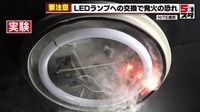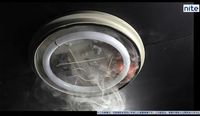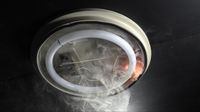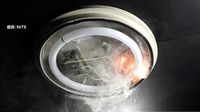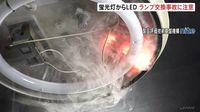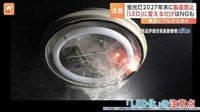The National Institute of Technology and Evaluation (NITE) has issued a warning regarding the potential fire hazards associated with improper lamp replacement when switching from fluorescent lamps to LED lighting. With the manufacture, import, and export of general lighting fluorescent lamps set to be phased out by the end of 2027, many consumers are transitioning to LED lighting. However, this switch is not as straightforward as it may seem, as accidents due to incorrect lamp replacements have been reported.
In November 2023, during the 5th Conference of the Parties to the Minamata Convention on Mercury, a decision was made to ban the production of all general lighting mercury lamps by the end of 2027. This initiative aims to reduce the risks associated with mercury exposure to both humans and the environment. As of December 2024, approximately 60% of existing lighting has already been converted to LED, indicating a significant shift towards more sustainable lighting options.
NITE has reported twelve incidents of accidents related to improper lamp replacement between 2015 and 2024. These accidents often stem from neglecting to follow essential safety precautions during the replacement process. NITE emphasizes that there are two primary methods for changing fluorescent lamps to LED: replacing the entire lighting fixture or simply replacing the fluorescent lamp with an LED lamp within the existing fixture. The latter method has been associated with a greater risk of accidents.
To mitigate these risks, NITE has outlined three critical points to consider when replacing fluorescent lamps with LEDs:
- Choose an LED lamp that matches the lighting method of the fluorescent lamp fixture.
- Adhere to the safety precautions listed on the LED lamp's packaging or instruction manual.
- After replacing the lamp, check for any abnormalities such as flickering or unusual noises.
One notable incident involved a fire caused by incorrect installation of an LED lamp. NITE released experimental footage showing smoke billowing from a lighting fixture, followed by flames erupting due to a starter being left in place during the installation of the LED lamp. This incident underscores the importance of ensuring that all components are compatible and correctly installed.
Panasonic Lighting has also weighed in on the matter, highlighting that fluorescent lamp fixtures contain multiple stabilizers. If these stabilizers are mismatched with the new LED lamp, there is a risk of ignition. As such, Panasonic recommends that consumers replace the entire fixture with an LED-compatible unit to avoid potential hazards. They further noted that many consumers may not fully understand whether their current lighting is fluorescent or LED, which could lead to improper installations.
As the deadline for the ban on fluorescent lamps approaches, consumers are urged to act swiftly. A representative from a local confectionery shop expressed surprise at the ban, noting that 95-96% of their store's lighting is fluorescent. He mentioned concerns about the costs associated with replacing the fixtures, indicating that many businesses might delay the transition.
The transition to LED lighting is not only a regulatory requirement but also a practical necessity. With the reduction of fluorescent lamp availability, consumers are encouraged to switch to LED lighting sooner rather than later. Industry experts predict that the share of LED bulbs will continue to rise as the end of 2027 approaches, and fluorescent lamps may soon become scarce.
NITE has also developed a web search tool called 'NITE SAFE-Lite,' which allows users to search for accident and recall information related to various products. This tool can be particularly useful for consumers looking to ensure the safety of their lighting fixtures and avoid potential hazards.
In summary, while the shift from fluorescent to LED lighting represents a significant advancement in energy efficiency and environmental responsibility, it is crucial for consumers to proceed with caution. Following NITE's guidelines can help prevent accidents and ensure a safe transition to LED lighting.
As the deadline for the fluorescent lamp ban draws nearer, awareness campaigns and educational resources will play a vital role in guiding consumers through this transition. NITE's proactive approach to informing the public about the risks associated with improper lamp replacement is essential in fostering a safer environment for all.
